Cleaning to Conservation: Remote Underwater Photographs Reveal Environmental Drivers and Resighting Patterns of Mobula alfredi in Laamu Atoll, Maldives
2023
Benjamin Guilford-Pearce (MSc - University of Exeter)
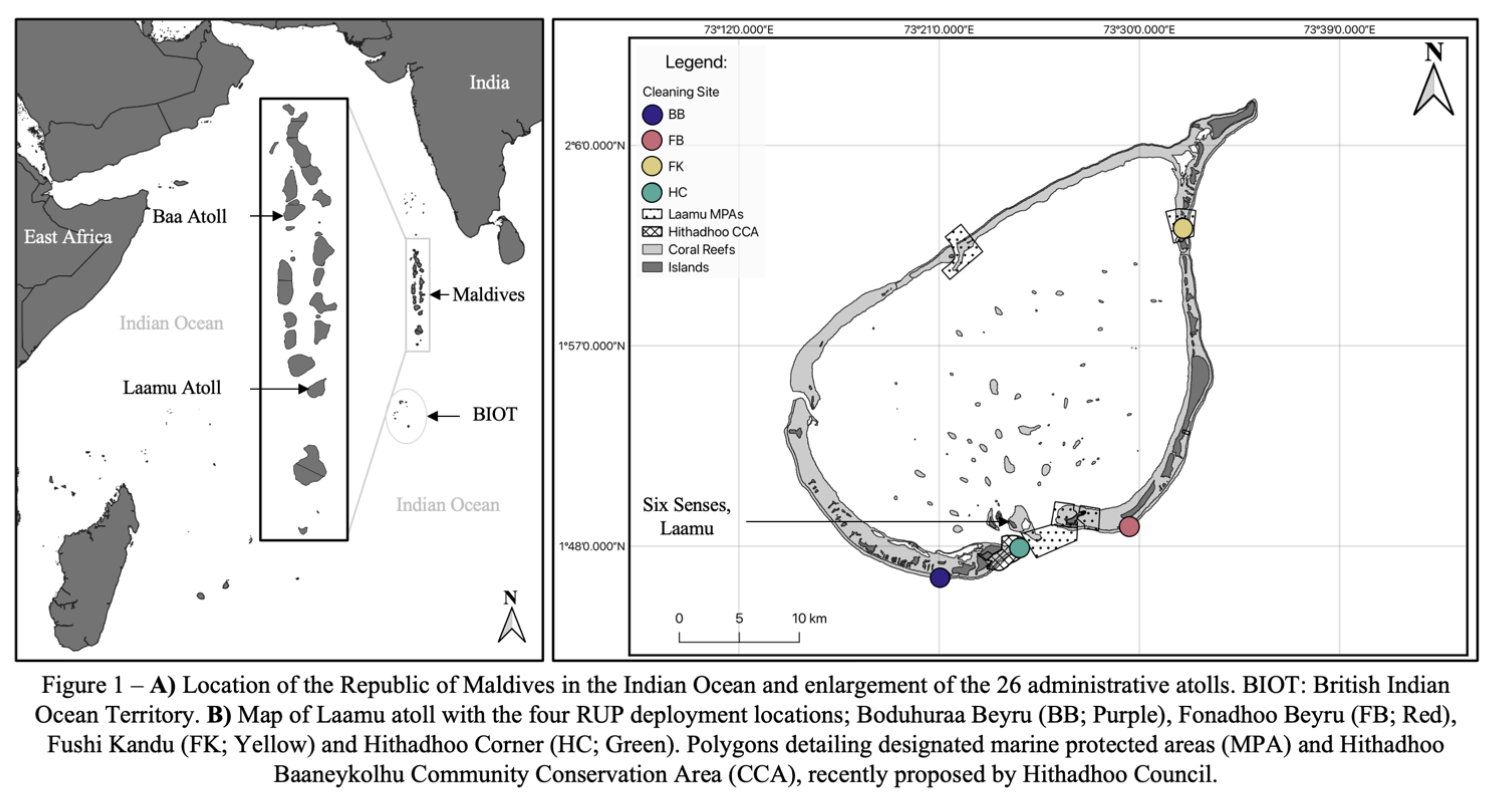
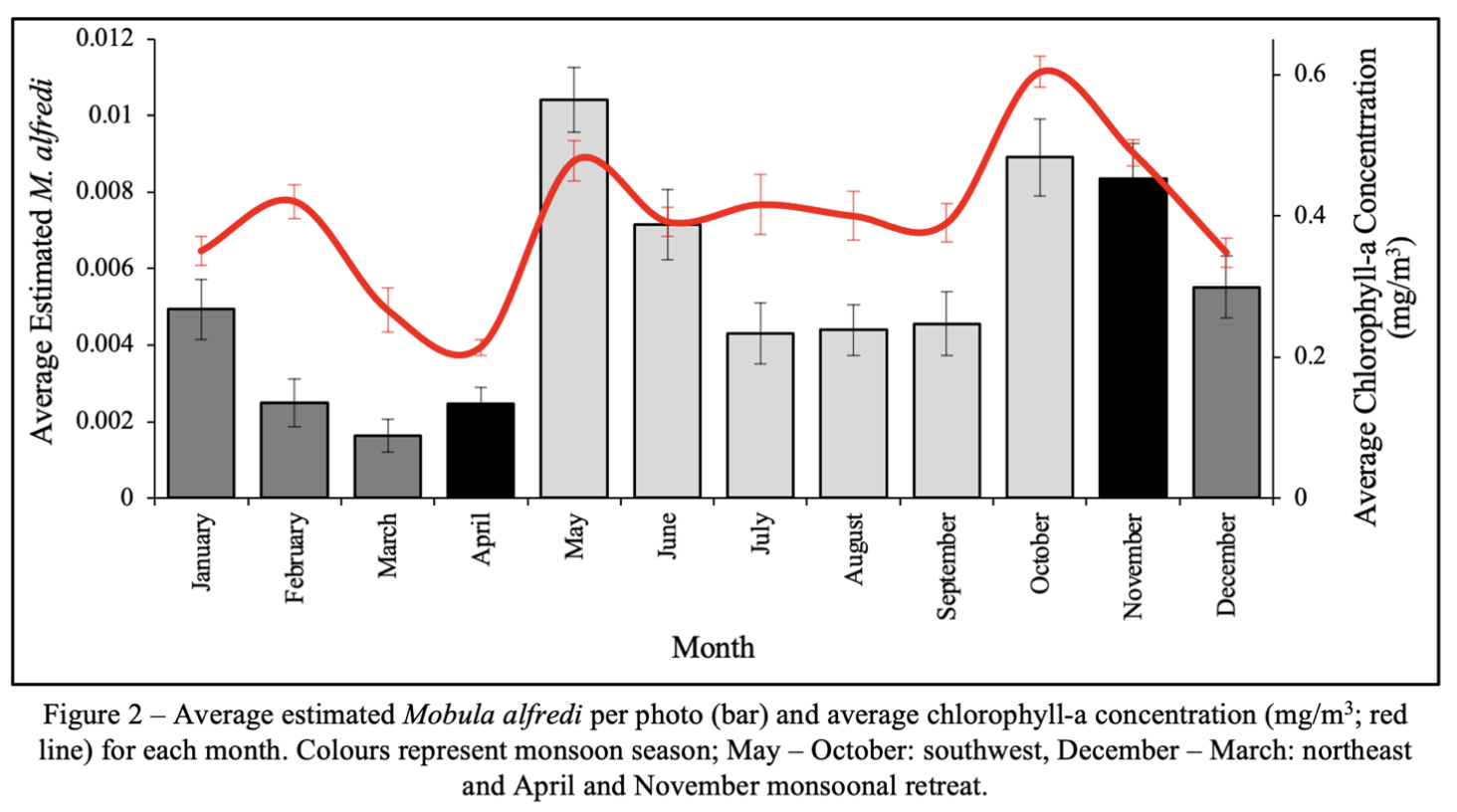
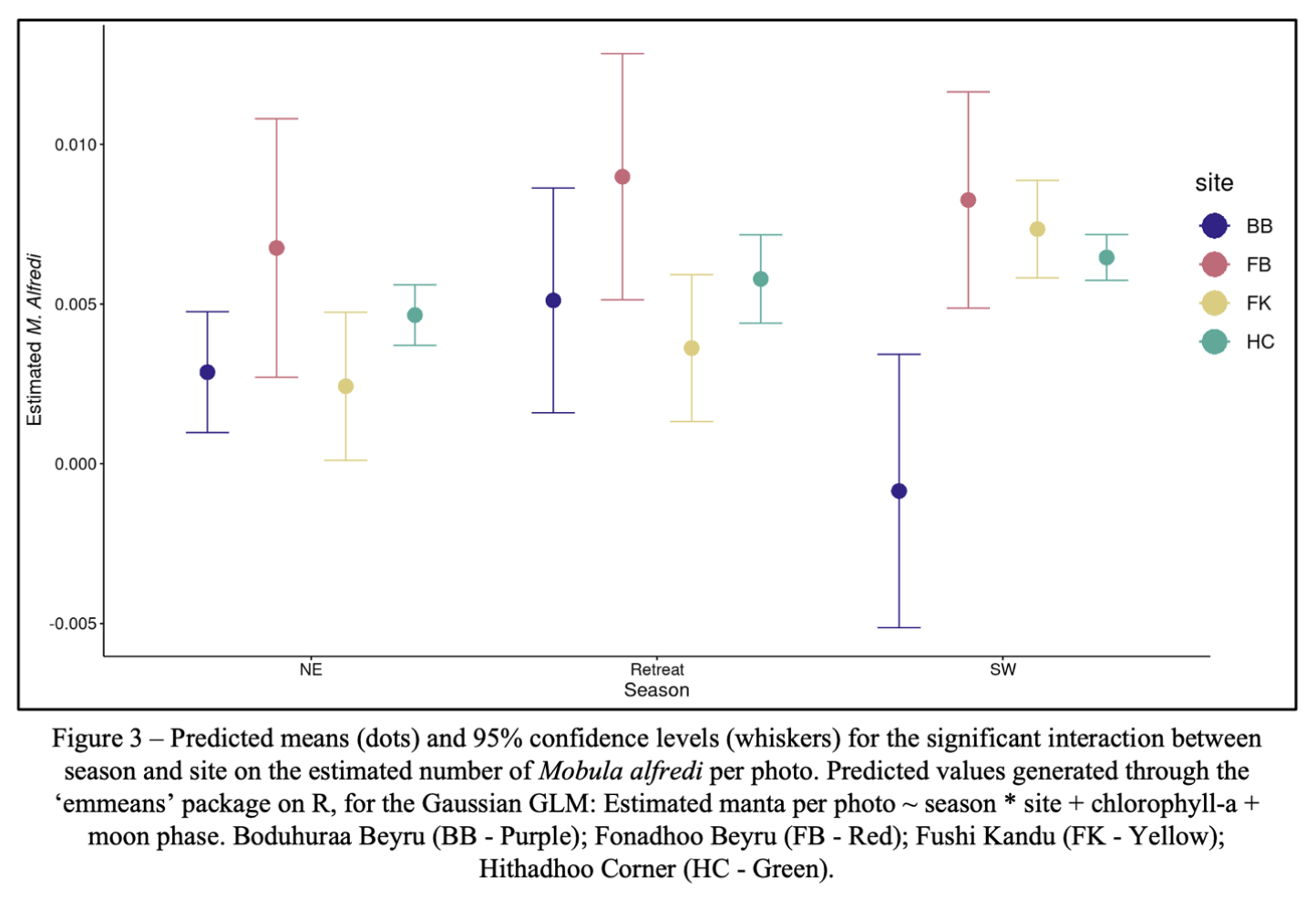
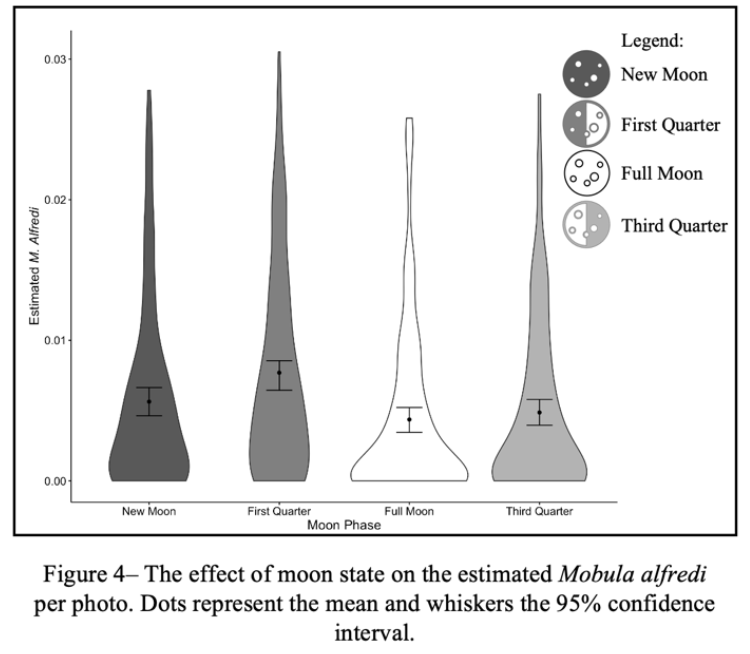
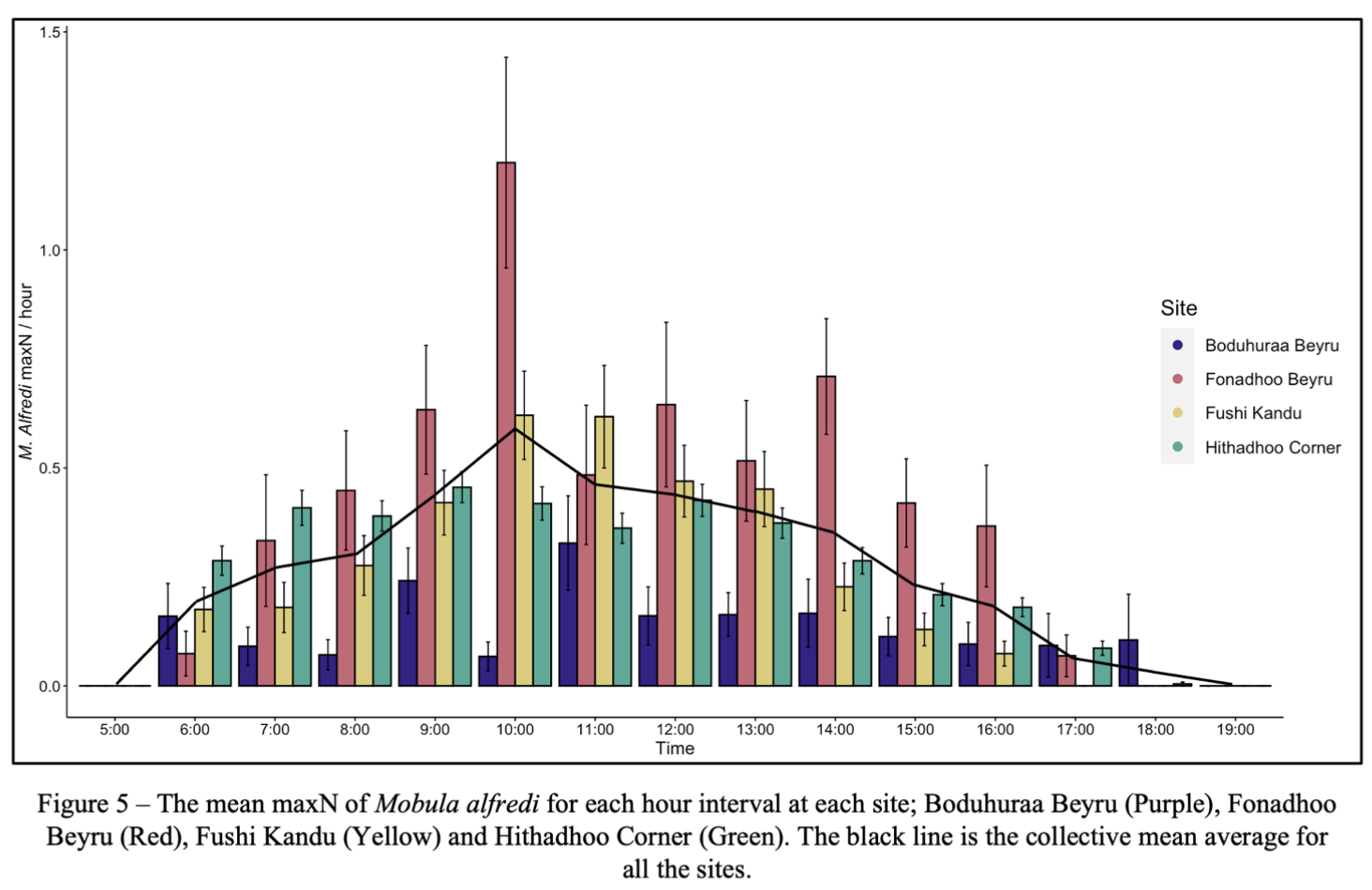
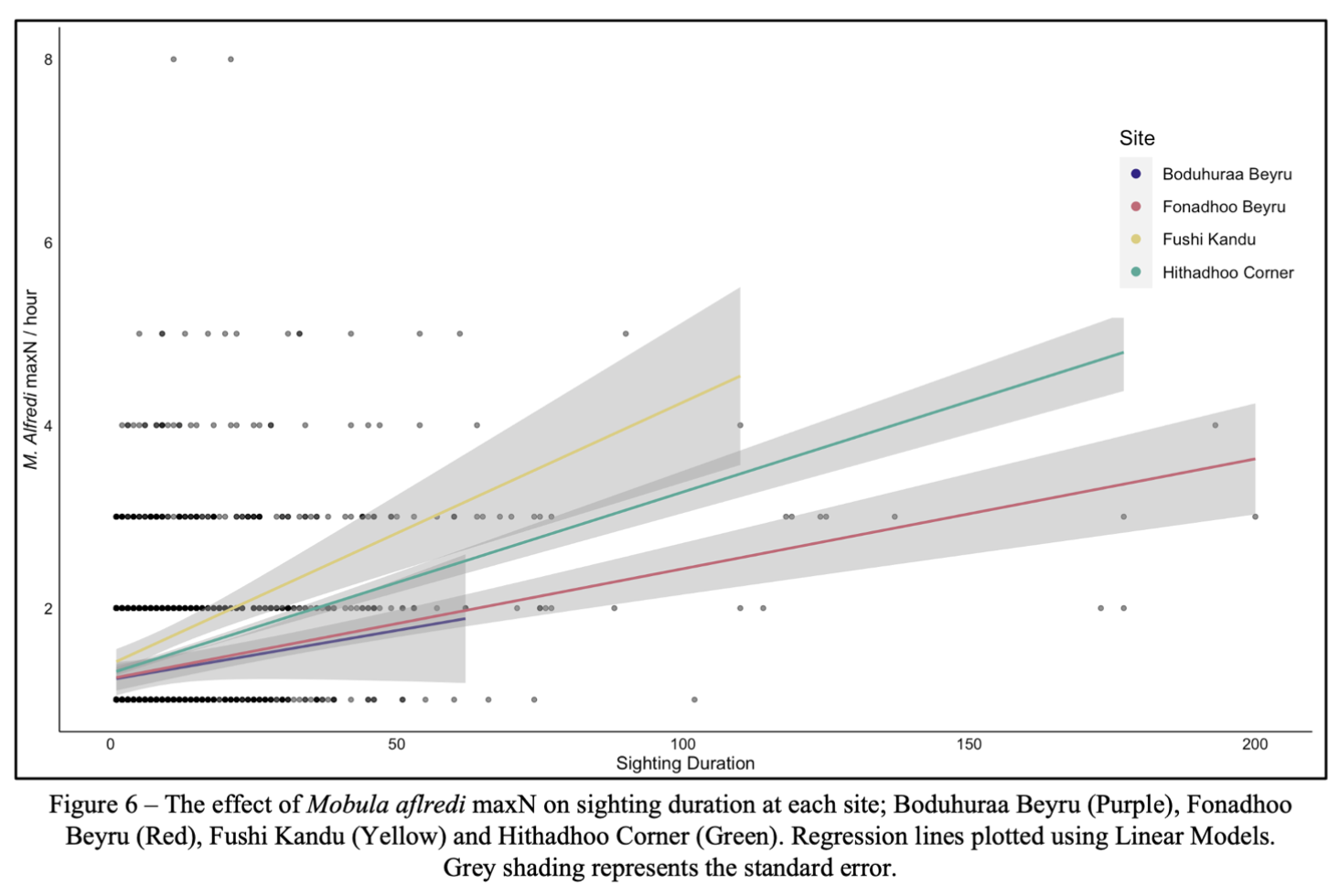
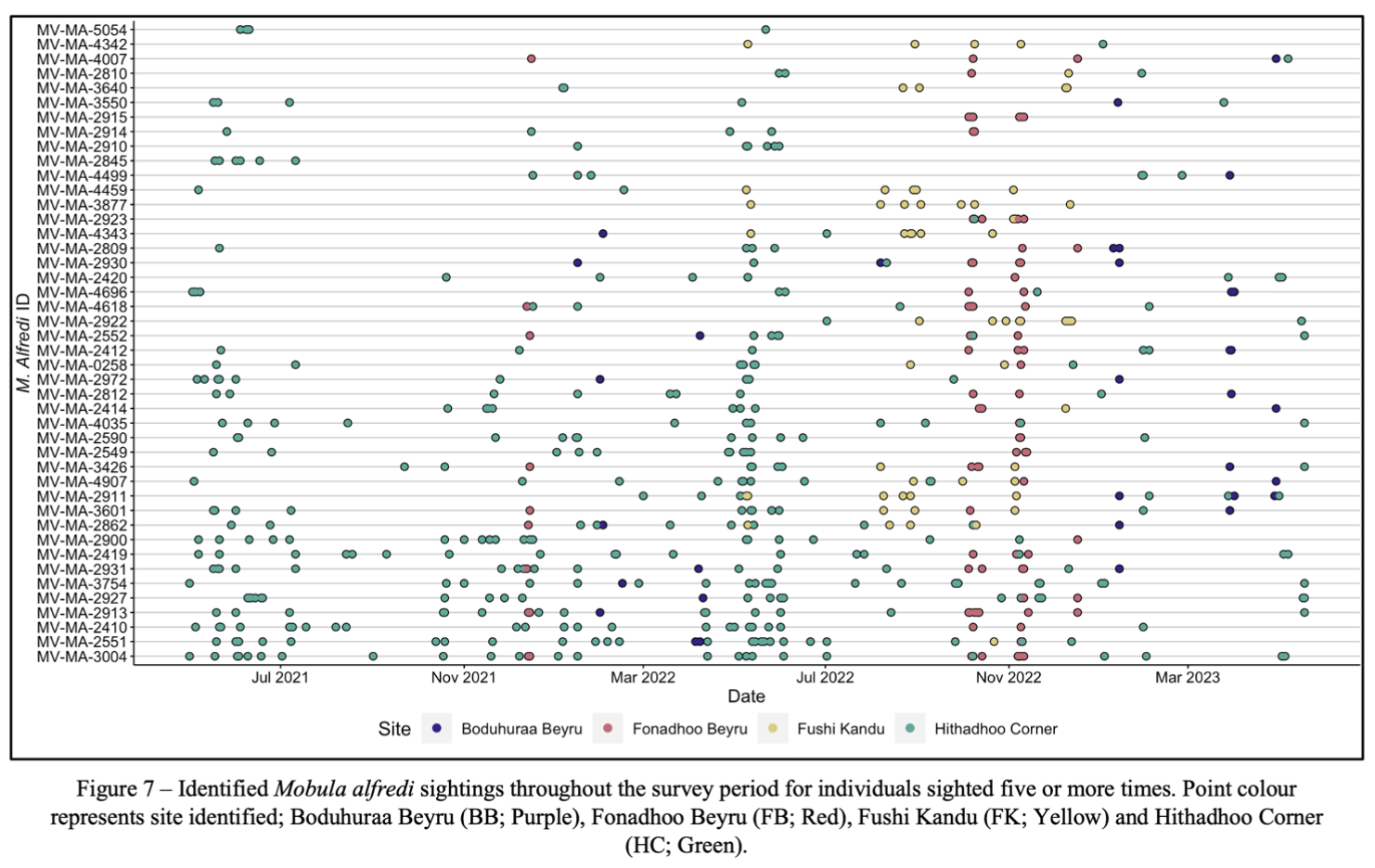
Summary: Reef manta rays are threatened by anthropogenic exploitation. Fishing and tourism coupled with conservative life history traits, like late maturation and low fecundity, have made this species vulnerable to extinction. This study, in Laamu atoll in the Maldives, used remote underwater photosystems, which revealed factors affecting manta ray abundance, including monsoon season, chlorophyll-a concentration, moon state, and time of day. Results suggest a small resident population that increases with favourable conditions, informing marine protection strategies and highlighting regional knowledge gaps. Effective protection is crucial to counter climate, tourism, and fishing threats to these vulnerable species.
Abstract
“Reef manta rays (Mobula alfredi) are threatened by anthropogenic exploitation. Fishing and tourism coupled with conservative life history traits, like late maturation and low fecundity, have made this species vulnerable to extinction. Site-specific spatiotemporal ecological knowledge at key aggregations is imperative for effective marine protection. To understand drivers of abundance around cleaning stations and residency patterns of reef manta rays, passive remote underwater photosystems were deployed at four known cleaning sites around Laamu, a remote Maldivian atoll. Between March 2021 and May 2023, 455,458 photos were analysed for reef manta ray presence and identification. Generalised linear models revealed significant effects of monsoon season, chlorophyll-a concentration, moon state, and time of day on abundance, while human presence had no effect. Branchial spot patterns were assessed for 629 photos, allowing for 81 unique individual identifications, over 50% of all identified in the atoll. Our results suggest that Laamu has a small, annual, resident reef manta ray population, which significantly increases in response to high chlorophyll-a concentrations, low illumination moon states, season, and time of day. Broadly, seasonal productivity increases cleaning station abundance, suggesting Laamu has productive foraging patches in proximity. This understanding can guide marine spatial planners on the effective implementation of Laamu’s first marine protected area management plan. It also raises questions of the true interconnectedness of Laamu with other atolls and highlights clear knowledge gaps. Additionally, such findings build on cleaning site suitability understanding, and at what conditions they are favourable. Effective, enforced, and informed protection will aid in reducing future climate, tourism, and fishing pressures, all threatening reef manta rays.”
Author Affiliations
University of Exeter
The Manta Trust
Maldives Manta Conservation Programme
Maldives Underwater Initiative (MUI) by Six Senses Laamu
Hadhdhunmathi Hithadhoo Council
